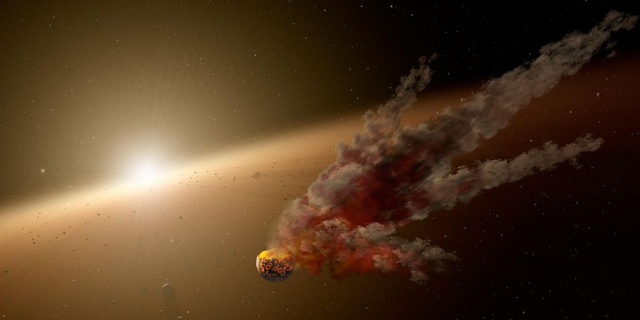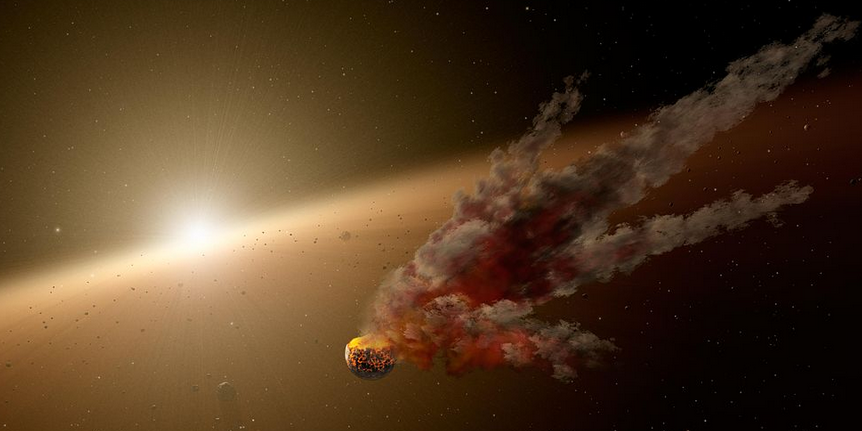BTN.com staff, BTN.com staff, September 11, 2015
 First, the bad news: Right now, there are giant rocks - some of them the size of U.S. states - out in space that could collide with our planet, wiping out most of life on Earth.
First, the bad news: Right now, there are giant rocks - some of them the size of U.S. states - out in space that could collide with our planet, wiping out most of life on Earth.
Now, the good news: First, no major asteroid is expected to hit our world for a while. And second, when one does threaten us, we have a fairly straightforward plan to deal with it, thanks in large part to Bruce Conway.
A professor emeritus of aerospace engineering at the University of Illinois, Conway spent several years working out a solution for the eventual possibility of asteroids colliding with Earth. And its genius is in its simplicity: All it requires is coordinating a collision.
?I started studying various aspects of it 15 years ago and looking at the optimum way of designing the trajectory,? said Conway, who hesitated to take too much credit. ?The idea of hitting an asteroid with a spacecraft and deflecting it, I am not the originator of that.?
Smashing two objects together in space stands in contrast with examples from Hollywood sci-fi blockbusters like ?Armageddon? and ?Deep Impact.? The plots of those movies involved considerably more complex tactics like launching manned expeditions or high explosives into deep space.
From a financial standpoint, the two disaster thrillers were a smashing success (pun intended) when they were released in the 1990s, grossing hundreds of millions of dollars. But Los Angeles-based screenwriter Robert Roy Pool, who received a credit on ?Armageddon,? said his film didn?t employ a solution rooted in science because it simply didn?t exist at the time.
?It?s great someone finally figured out how to deflect an asteroid!? Pool said. ?When I worked on ?Armageddon,? no one at NASA had yet come up with a viable plan. So we had to make up a cockamamie plan that could never work in the real world.?
Pool said he never thought nuclear weapons would be especially effective as a means to divert asteroids.
?There would be no shockwave like we would see on Earth in a nuclear detonation,? Pool said. ?The amount of kinetic energy resulting from the blast would be minimal, and the asteroid?s path would actually be altered by very little - not enough to make a difference, unless the asteroid could be attacked many years in advance.?
That claim aside, Conway said Pool?s assessment of using nuclear weapons to deflect an asteroid is both ?right and wrong.?
?Nuclear weapons aren?t useless,? Conway said. ?They wouldn?t speed up the process, but they are another way of accomplishing it. Right now, no one knows if a nuclear weapon could push the asteroid.?
In any case, Conway is sticking to his ?deflection by collision? theory of altering the path of an asteroid, and backs that up with Newton?s Second Law of Motion.
?The basic idea with Newton?s law is that a spaceship [impact] would create a crater, and the asteroid would be shoved in another direction,? he explained. ?The mechanism is viable, probably more effective on some asteroids than others.?
His approach to the problem isn?t just an abstraction, either. Conway recently lent his expertise to the European-led Asteroid Impact and Deflection Assessment (AIDA) mission planned for 2022, when a spacecraft is planned to smack into the asteroid Didymos in hopes of deflecting it off-course.
Conway said the mission will have a second spacecraft orbiting Didymos to measure the change in trajectory once the impact takes places. The key for the AIDA mission is that the spaceship hits the asteroid and dislodges boulders and rocks from the surface rather than sinking into the surface like silly putty, he added.
[btn-post-package]?The more stuff you throw off the surface, the better,? Conway said. ?If you have a sufficiently long period in advance, probably the optimal thing is to hit the asteroid head-on or in the opposite direction to speed it up or slow it down as much as possible. If you only have six months, the optimal direction is not head-on.?
Most importantly, the experiment has a ?do no harm? requirement, which means no additional threat to Earth will occur as a result over the next century.
?If we do it and demonstrate it, that would be a great thing,? Conway said. ?But we don?t want to make any of the future close approaches any worse than they would have been without the experiment. You don?t want to turn something that started as benign into something dangerous.?
That chain of events might make for an interesting movie, though. Have at it, Hollywood.
By Tony Moton







